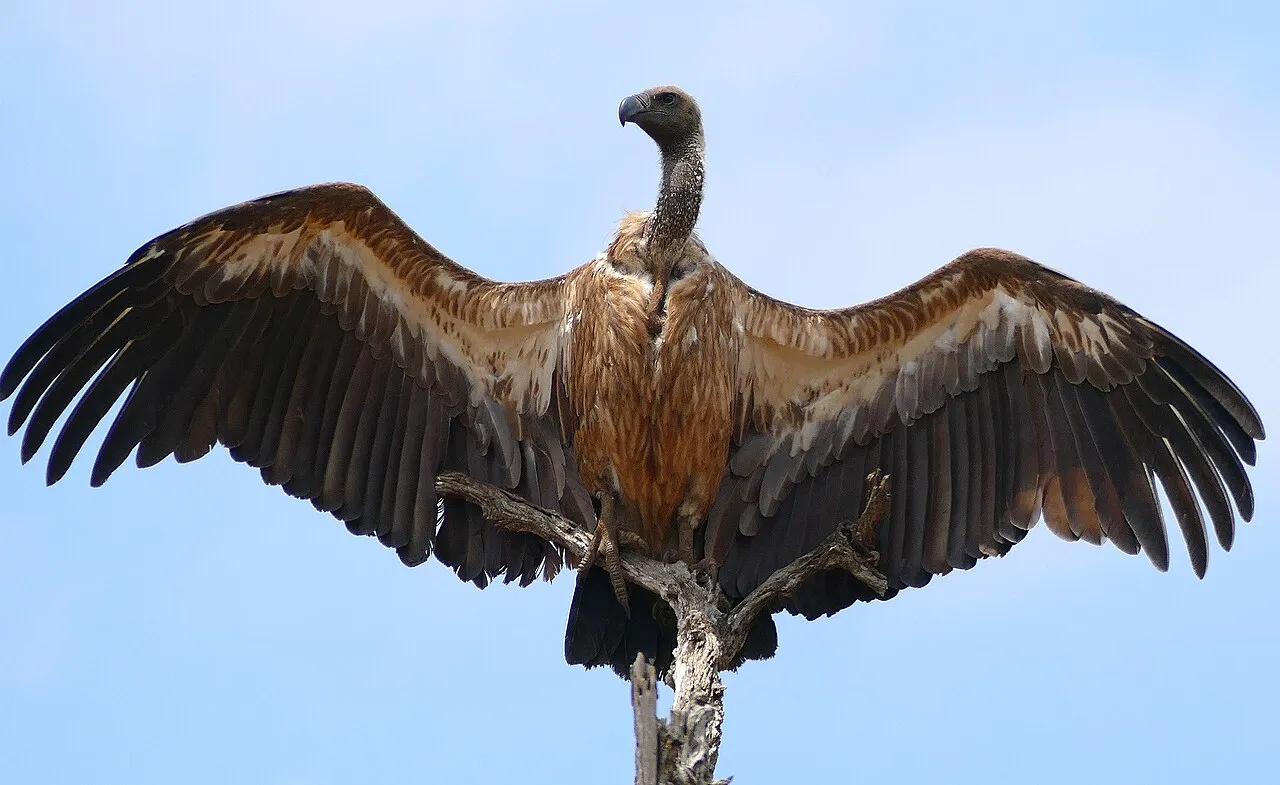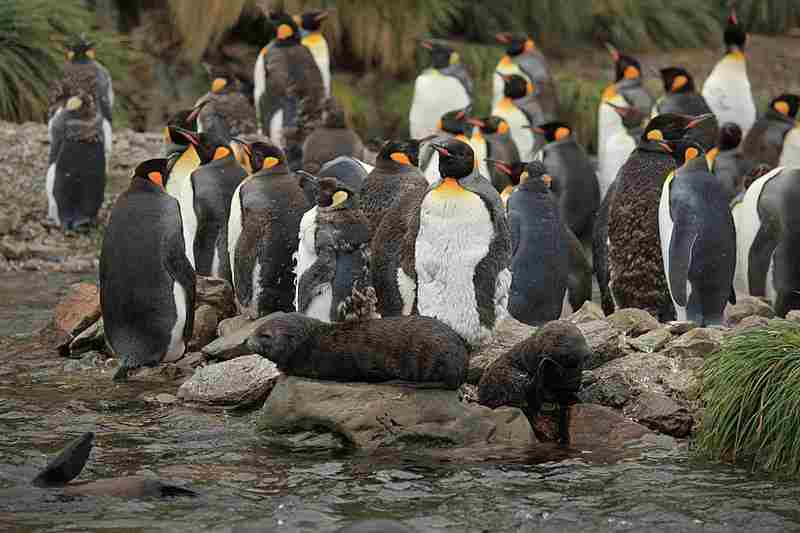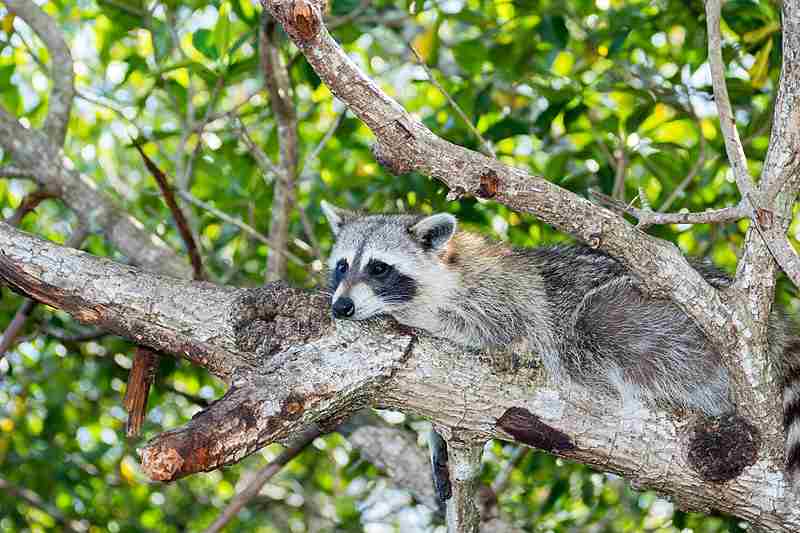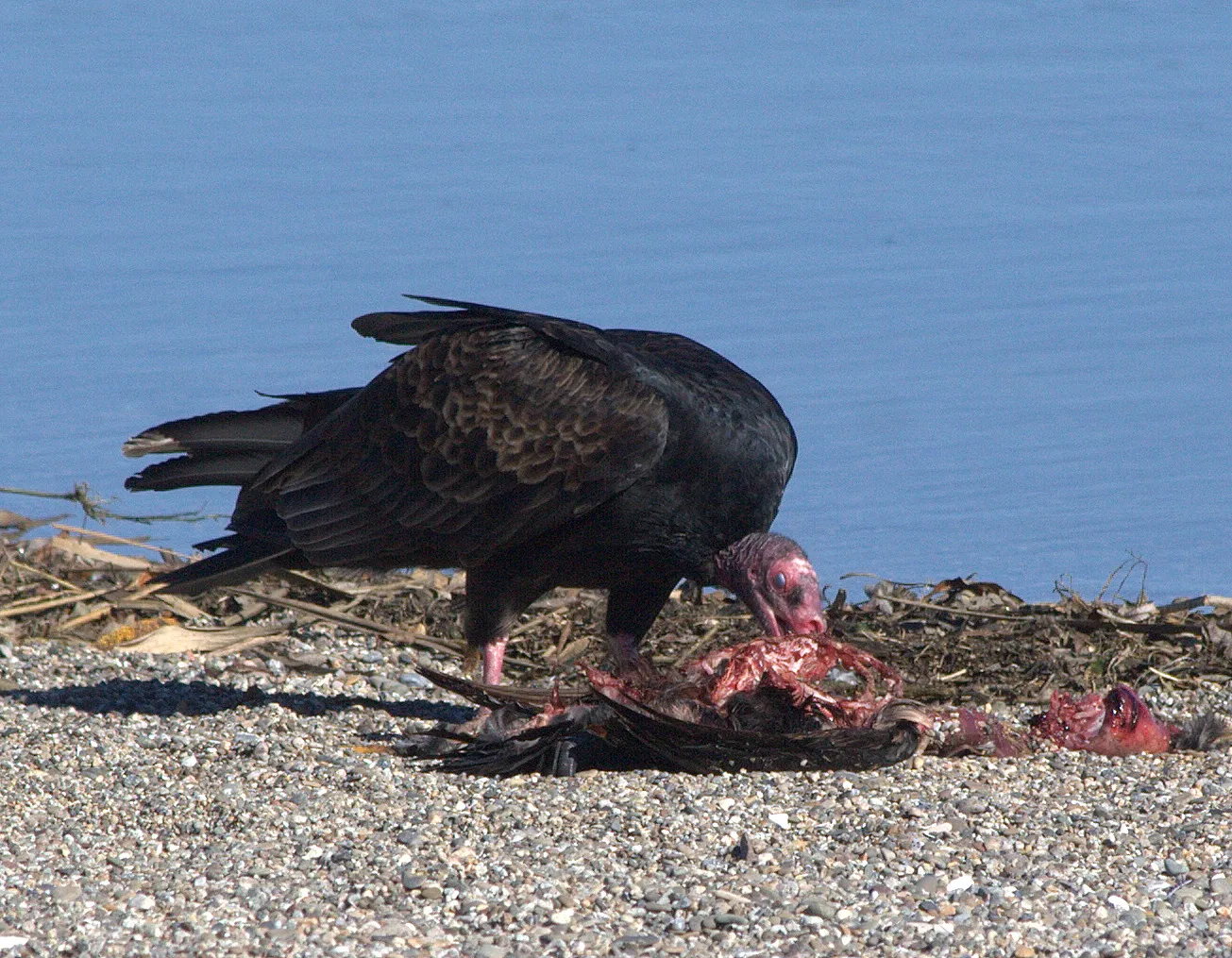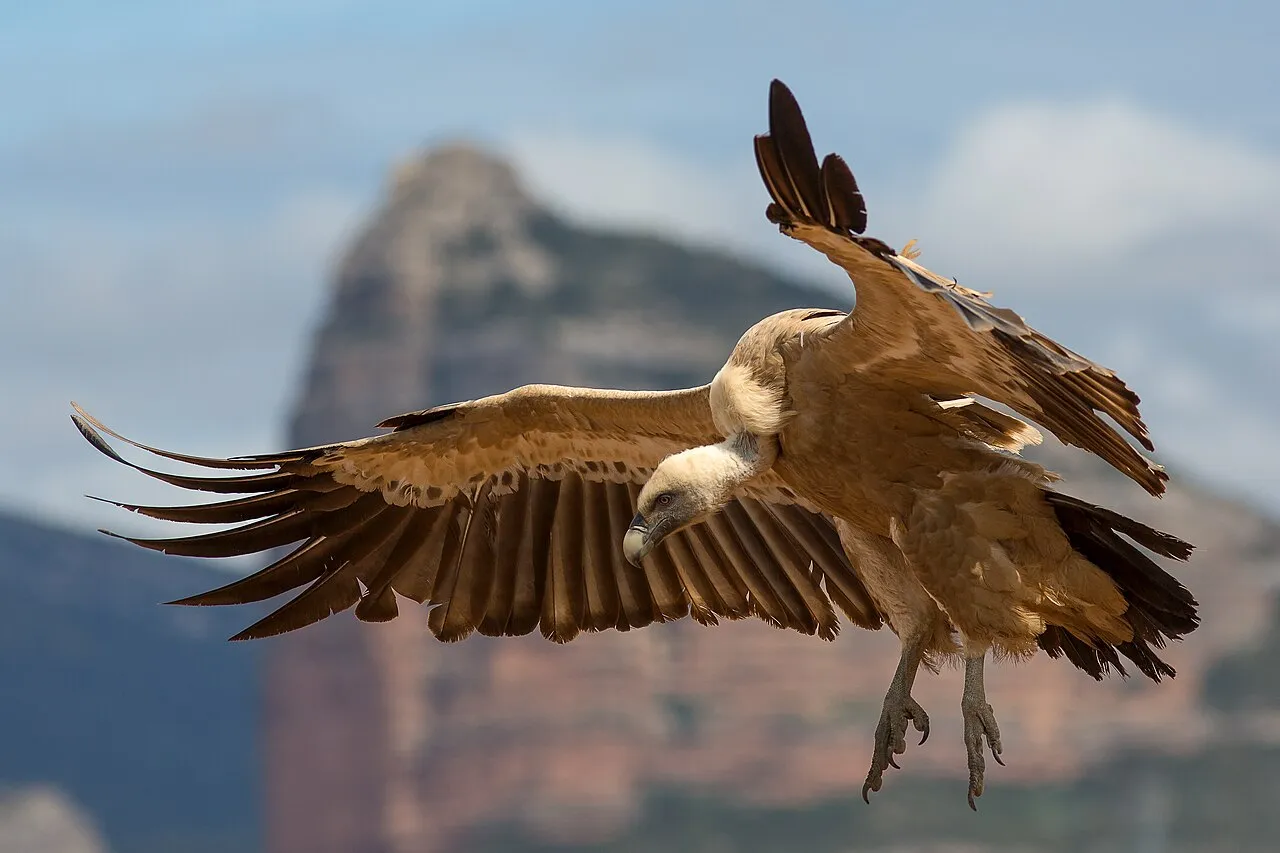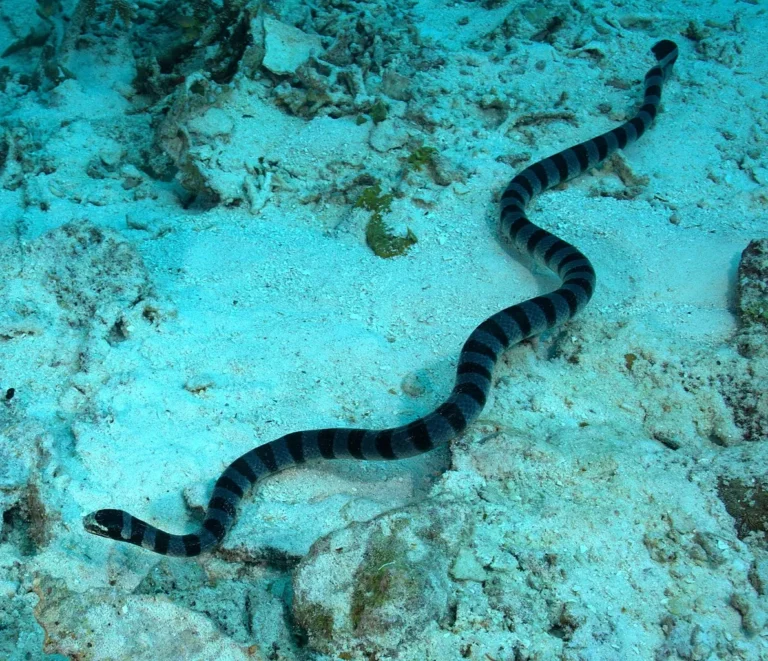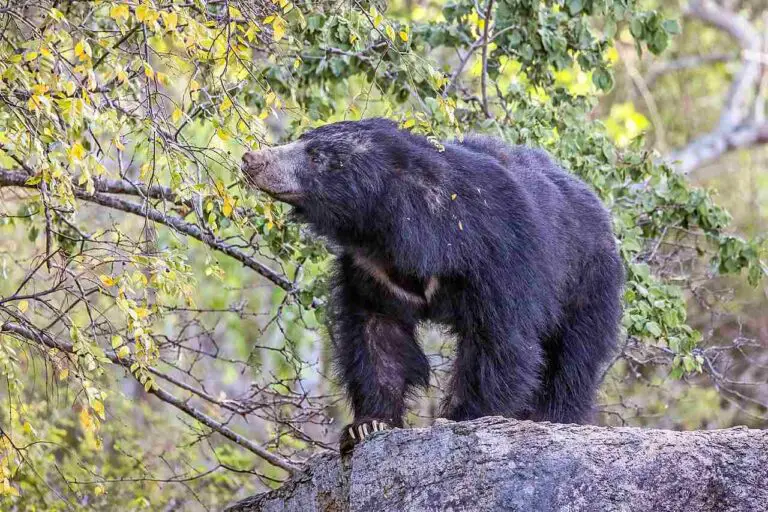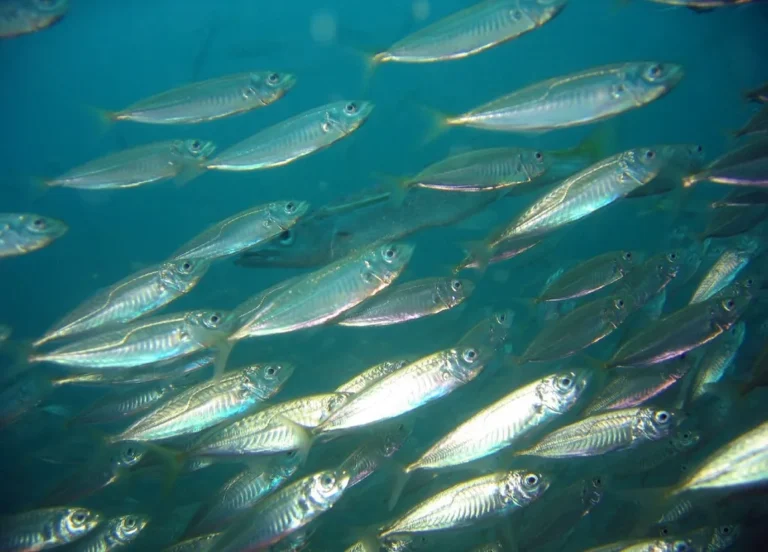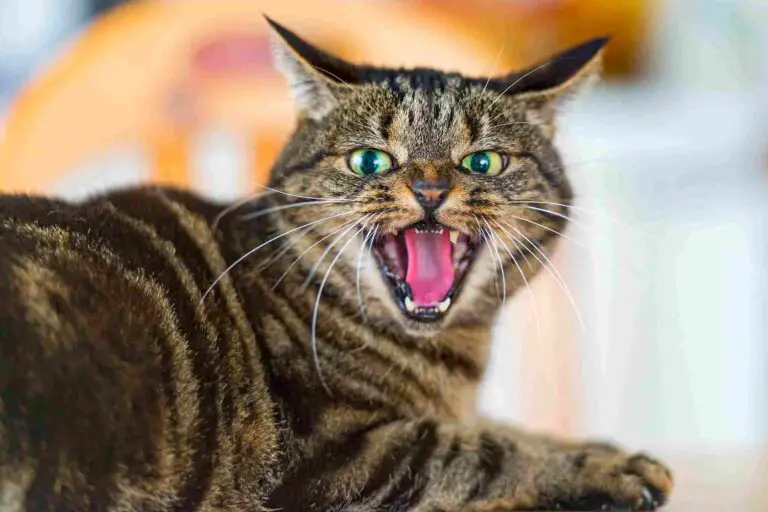Vulture Facts, Diet, Habitat, Characteristics Discussed
Vultures, classified under the order Accipitriformes and family Accipitridae, exhibit diverse adaptations for scavenging and play critical roles in ecosystem health by consuming carrion and preventing the spread of diseases. Despite facing threats such as habitat loss and poisoning, conservation efforts aim to safeguard vulture populations and their ecological contributions worldwide.
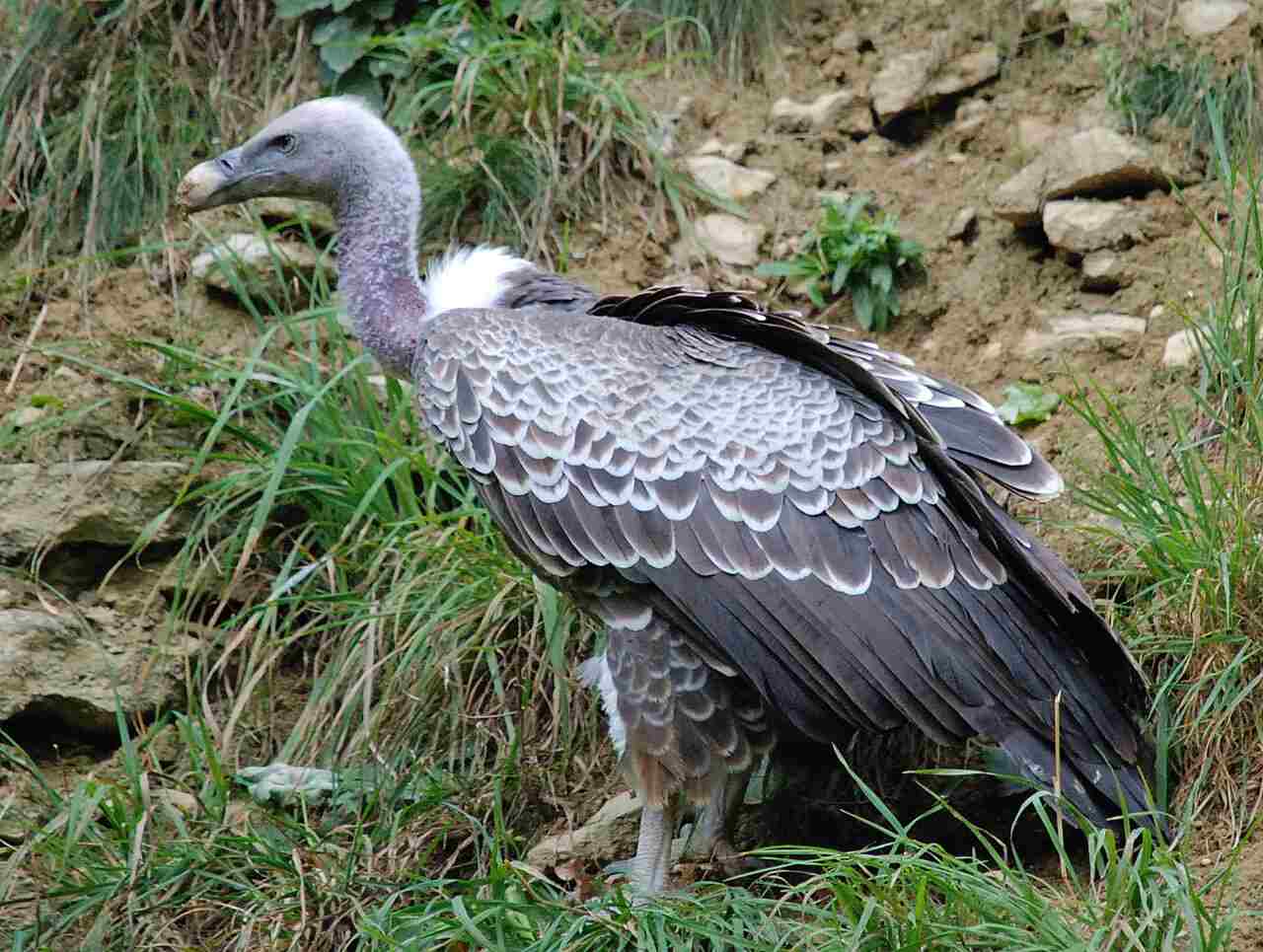
*Facts About Vultures
- Vultures belong to the order Accipitriformes and family Accipitridae.
- They are found on every continent except Antarctica.
- Vultures primarily feed on carrion.
- Some species have multiple subspecies with variations in size and plumage coloration.
- They have keen eyesight and featherless heads to prevent bacterial buildup while feeding on carcasses.
- Vultures are characterized by large wings, hooked beaks, and sharp talons.
- Their beaks lack true teeth but have strong jaw muscles for tearing flesh.
- Vultures help prevent disease transmission by consuming carrion.
- They play important roles in nutrient cycling and ecosystem balance.
- Vultures form monogamous breeding pairs and lay one to three eggs per clutch.
- The lifespan of vultures varies among species.
- Conservation efforts are underway to protect vultures from threats such as habitat loss and poisoning.
- Vultures are wild birds and are not suitable for domestication or captivity as pets.
| Criteria | Summary |
| Scientific Classification |
– Vultures belong to the kingdom Animalia, phylum Chordata, class Aves, order Accipitriformes, and family Accipitridae. – They are further classified into subfamilies Aegypiinae (Old World vultures) and Cathartinae (New World vultures), with various species within the genera Gyps and Cathartes.
|
| Subspecies |
– Vulture species have multiple subspecies with variations in geographic range, size, and plumage coloration. – Subspecies diversity reflects adaptation to different environmental conditions and aids in population monitoring and conservation efforts.
|
| Size and Weight |
– Vultures vary in wingspan (5 feet to over 10 feet) and weight (several pounds to over 30 pounds), influencing flight abilities, foraging strategies, and ecological roles within ecosystems.
|
| Appearance and Identification |
– Vultures are characterized by large, broad wings, featherless heads, hooked beaks, and sharp talons. – Plumage coloration varies from dark brown to white, aiding in identification and classification.
|
| Dentition and Bite Force |
– Vultures have powerful beaks with sharp edges for tearing flesh and a strong jaw muscles. – Lack of true teeth is compensated by an acidic digestive system that helps neutralize pathogens in carrion.
|
| Diet |
– Vultures primarily feed on carrion, reducing disease transmission and preventing environmental contamination.
|
| Behavior |
– Soaring behavior and keen eyesight aid in efficient foraging. – Vocalizations play a role in communication and social dynamics within vulture populations.
|
| Sounds/Vocalization |
– Generally silent, but may emit hissing sounds or grunts during interactions.
|
| Habitat |
– Found in various environments, including grasslands, savannas, deserts, forests, and urban areas. – Habitat availability and quality influence distribution, foraging success, and breeding behavior.
|
| Geographic Range and Distribution |
– Found on every continent except Antarctica, with highest diversity in tropical regions. – Distribution influenced by food availability, habitat suitability, and climate conditions.
|
| Tracks |
– No distinct tracks due to aerial lifestyle, but feeding activities leave marks around carcasses.
|
| Reproduction |
– Form monogamous breeding pairs, construct large stick nests, and lay one to three eggs per clutch. – Factors influencing reproductive success impact population growth and genetic diversity.
|
| Lifespan |
– Vulture lifespan varies among species, with some living up to 20-30 years or more. – Longevity contributes to ecosystem processes and services over time.
|
| Major Adaptations |
– Keen eyesight, featherless heads, strong beaks, and acidic digestive systems facilitate efficient scavenging. – Crucial for nutrient cycling, disease control, and ecosystem balance.
|
| Conservation Status |
– Threatened by habitat loss, poisoning, persecution, and other human-induced threats. – Conservation efforts aim to prevent further decline and restore populations for ecosystem health.
|
| Domestication and Suitability as a Pet |
– Wild birds unsuitable for domestication or captivity as pets. – Promotes responsible stewardship of wildlife and conservation of natural habitats.
|
1. Scientific Classification:
Kingdom: Animalia
Phylum: Chordata
Class: Aves
Order: Accipitriformes
Family: Accipitridae
Subfamily: Aegypiinae
Genus: Gyps (for Old World vultures) and Cathartes (for New World vultures)
Species: Various, including Gyps fulvus (Griffon Vulture), Gyps rueppelli (Rüppell’s Vulture), Gyps indicus (Indian Vulture), Cathartes aura (Turkey Vulture), etc.
2. Subspecies:
Details: Some vulture species have multiple subspecies with variations in geographic range, size, and plumage coloration.
Importance: Subspecies diversity reflects adaptation to different environmental conditions and helps in understanding population dynamics and evolutionary processes.
Ecological Implications: Preservation of subspecies diversity is crucial for maintaining genetic variation within vulture populations, which contributes to their resilience to environmental changes and diseases.
3. Size and Weight:
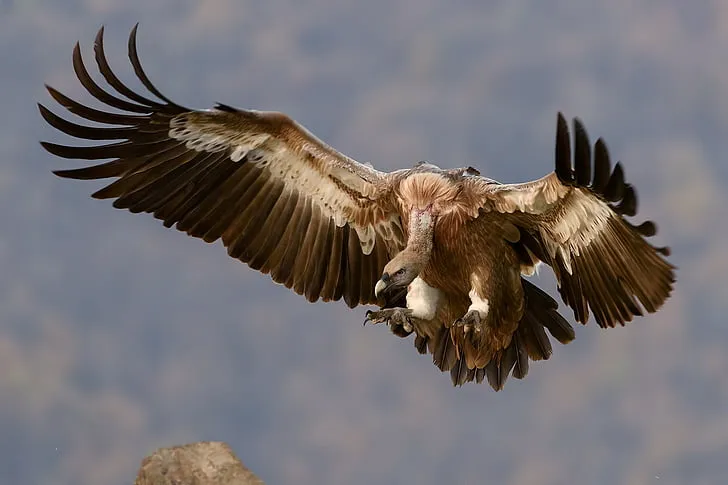
Details: Vultures vary in size, with wingspans ranging from around 5 feet (for smaller species) to over 10 feet (for larger species). Weight can range from several pounds to over 30 pounds.
Importance: Size and weight affect vultures’ flight abilities, foraging strategies, and ecological roles within ecosystems.
Ecological Implications: Larger vulture species may dominate carcass feeding, influencing scavenger dynamics and nutrient cycling. Body size also impacts energy requirements and nesting behaviors, which are important for population regulation and ecosystem balance.
4. Appearance and Identification:
Details: Vultures are characterized by large, broad wings, featherless heads, hooked beaks, and sharp talons. Plumage coloration varies among species, ranging from dark brown to white.
Importance: Physical characteristics aid in vulture identification and classification, essential for research, monitoring, and conservation efforts.
Ecological Implications: Featherless heads prevent bacterial buildup when feeding on carrion, while sharp beaks and talons facilitate efficient tearing of flesh. Plumage coloration may offer camouflage or thermoregulatory benefits, influencing vultures’ foraging success and survival in diverse habitats.
5. Dentition and Bite Force:
Details: Vultures have powerful beaks with sharp edges for tearing flesh and scavenging carrion. They lack true teeth but possess strong jaw muscles.
Importance: Beak structure and bite force determine vultures’ feeding abilities and dietary preferences, impacting their ecological roles.
Ecological Implications: Vultures’ efficient scavenging behavior helps prevent the spread of diseases by consuming carcasses, reducing the risk of pathogens affecting other wildlife and human populations. Strong beaks and jaw muscles enable vultures to access nutrient-rich tissues in carcasses, contributing to nutrient cycling and ecosystem health.
6. Diet:
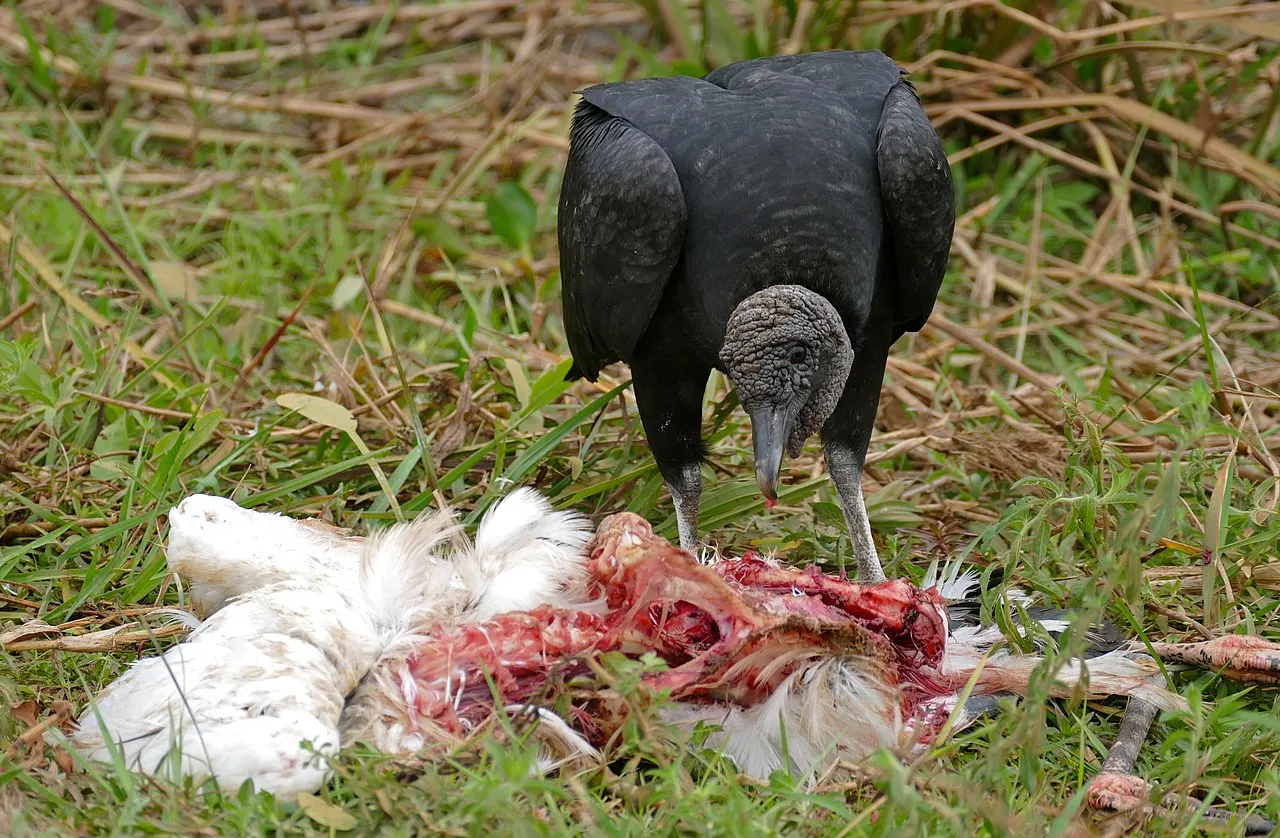
Details: Vultures are scavengers, primarily feeding on carrion (dead animals). They play a crucial role in cleaning up ecosystems by consuming carcasses that could otherwise spread diseases.
Importance: Vultures help maintain ecosystem health by disposing of animal carcasses, which reduces the spread of diseases and prevents water and soil contamination.
Ecological Implications: The absence of vultures can lead to an increase in disease transmission and a decrease in overall ecosystem health, as carcasses accumulate and decompose without natural scavengers to remove them.
7. Behavior:
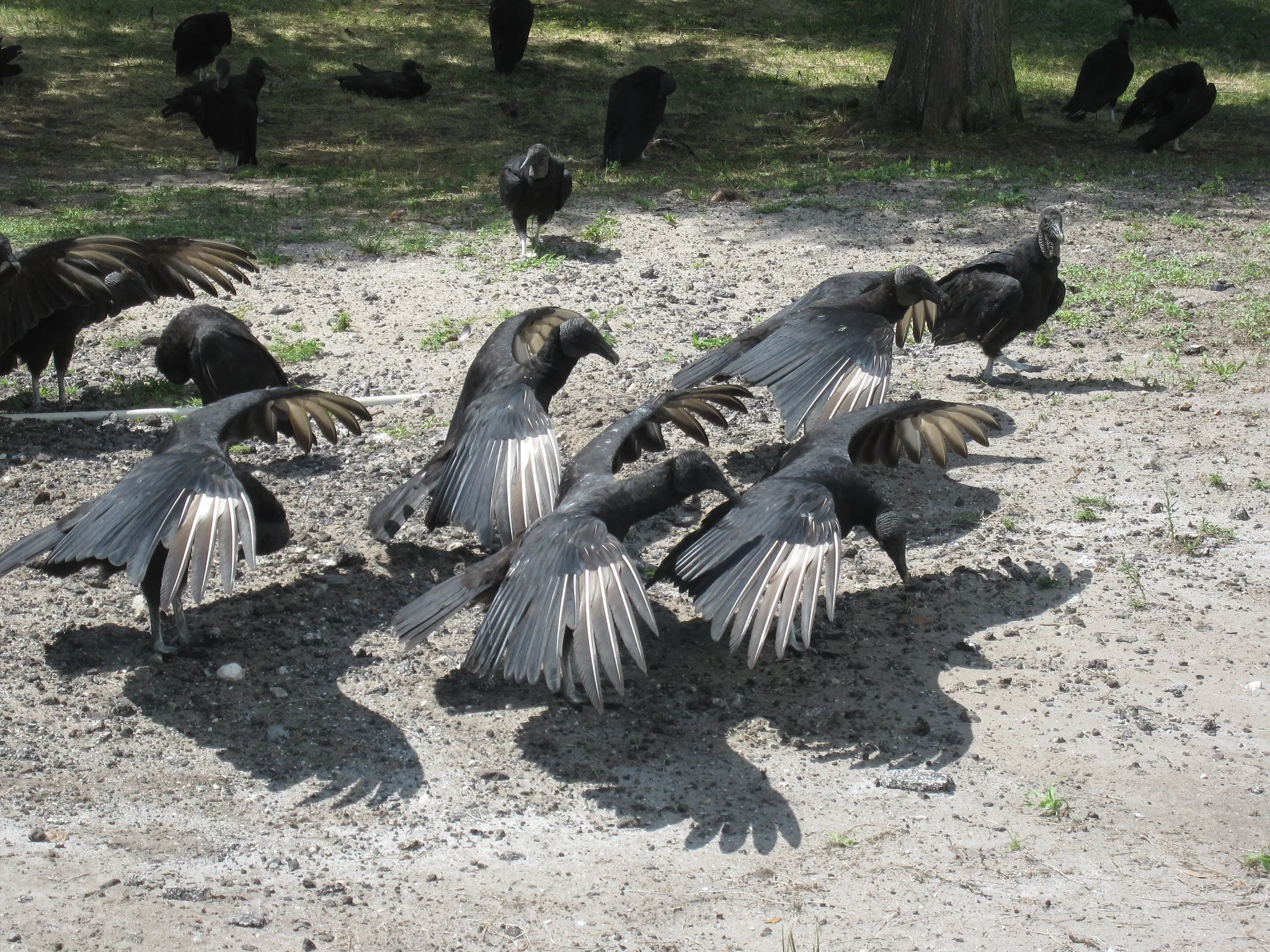
Details: Vultures are often seen soaring high in the sky, using thermal air currents to glide effortlessly. They have keen eyesight, allowing them to spot carrion from great distances.
Importance: Behavioral adaptations enable vultures to efficiently locate and feed on carrion, maximizing their ecological role as scavengers.
Ecological Implications: Vultures’ soaring behavior reduces energy expenditure during foraging, making them highly efficient scavengers. Their ability to locate and consume carrion helps regulate populations of scavenger-prey species and facilitates nutrient recycling in ecosystems.
8. Sounds/Vocalization:
Details: Vultures are generally silent birds, but they may emit hissing sounds or grunts during interactions with conspecifics or when threatened.
Importance: Vocalizations play a role in vulture communication, such as signaling aggression, establishing territory, or coordinating group movements.
Ecological Implications: Although vocalizations are not a prominent feature of vulture behavior, they may still play a role in maintaining social structures within vulture populations, influencing group dynamics and breeding success.
9. Habitat:
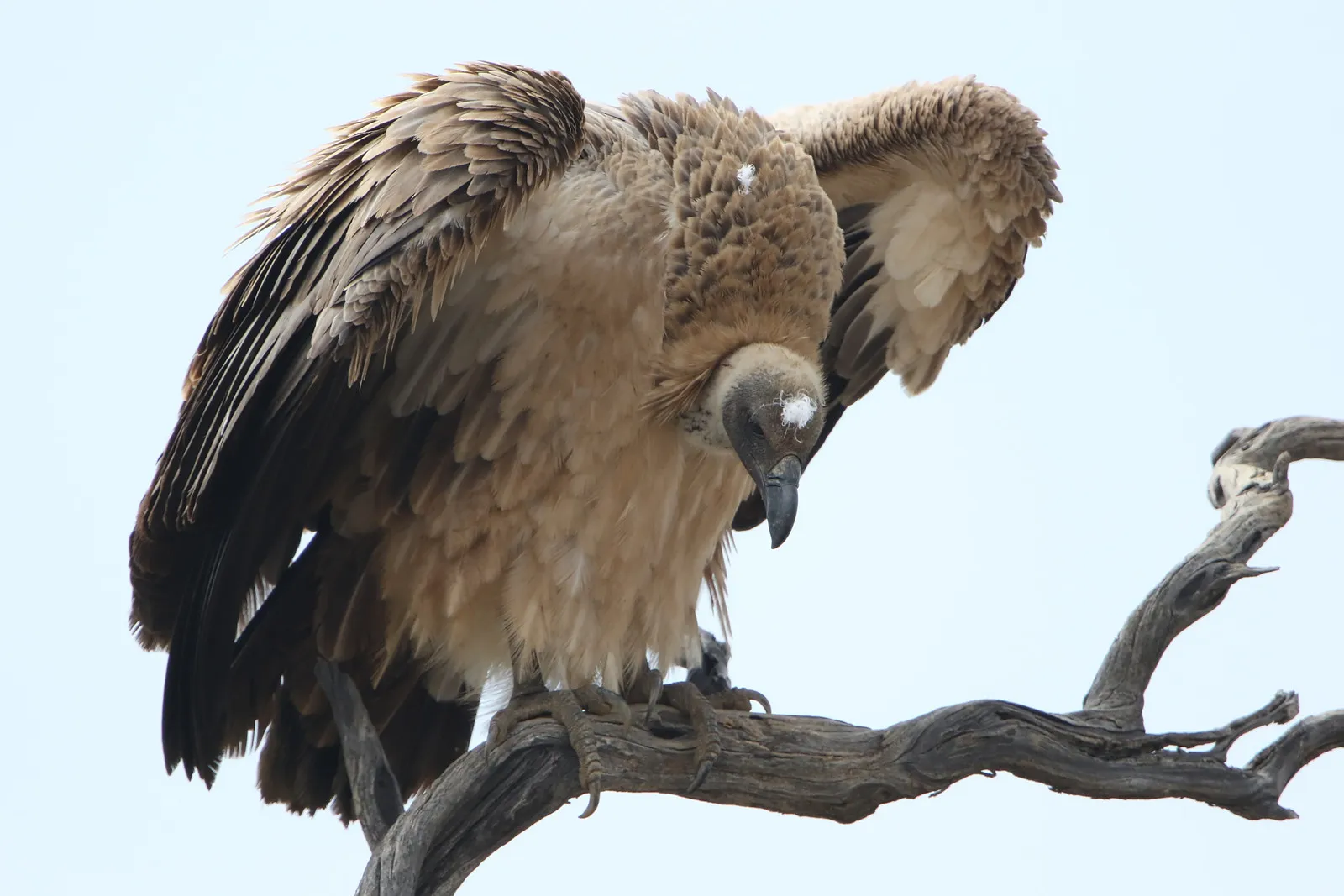
Details: Vultures inhabit a variety of environments, including grasslands, savannas, deserts, forests, and urban areas. They prefer open landscapes with access to carrion.
Importance: Habitat availability and quality determine vultures’ distribution and abundance, affecting their foraging success and reproductive success.
Ecological Implications: Changes in habitat due to human activities, such as habitat loss, fragmentation, and pollution, can impact vulture populations by reducing suitable foraging and nesting sites. Conservation efforts focus on preserving and restoring vulture habitats to ensure their long-term survival.
10. Geographic Range and Distribution:
Details: Vultures are found on every continent except Antarctica, with the highest species diversity in tropical and subtropical regions. Their distribution is influenced by food availability, habitat suitability, and climatic conditions.
Importance: Understanding vultures’ geographic range and distribution is essential for conservation planning, population monitoring, and management strategies.
Ecological Implications: Vultures’ presence or absence in specific regions can have cascading effects on ecosystem dynamics, including scavenger communities, nutrient cycling, and disease regulation.
11. Tracks:
Details: Vultures do not leave distinct tracks like terrestrial animals due to their primarily aerial lifestyle. However, their feeding activities may leave marks or disturbances around carcasses.
Importance: Tracking vultures’ movements and feeding behaviors can provide insights into their foraging ecology, resource use, and interactions with other scavengers.
Ecological Implications: Observing signs of vulture activity, such as feeding sites or roosting areas, can aid researchers and conservationists in identifying important habitats and monitoring changes in vulture populations over time.
12. Reproduction:
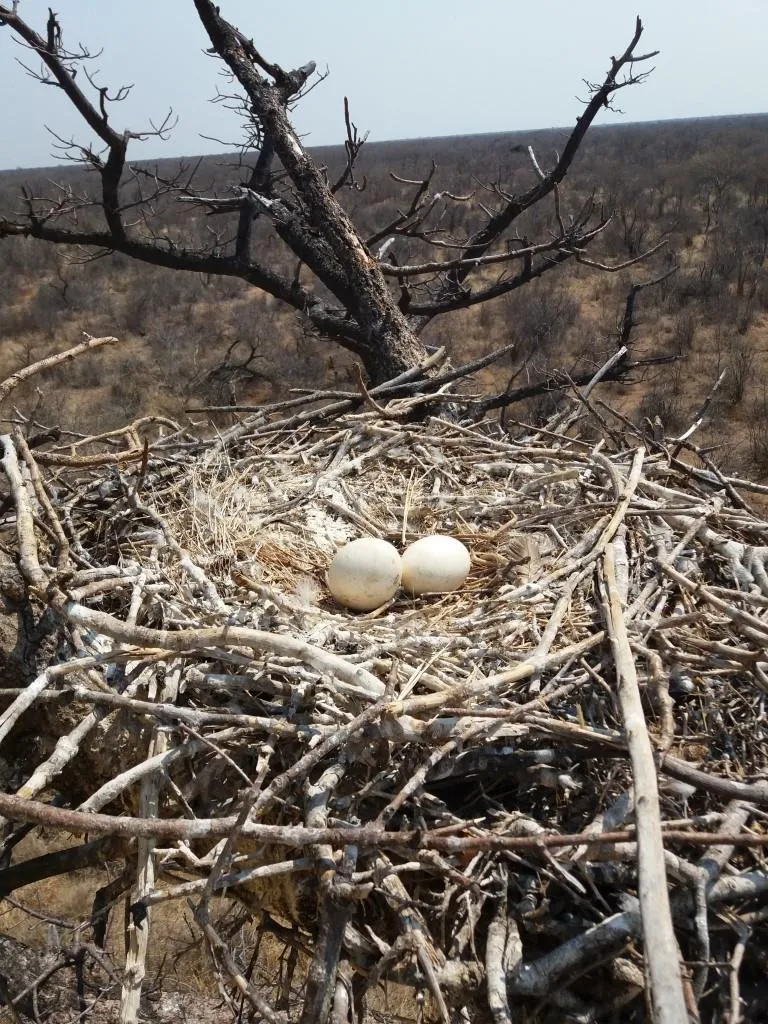
Details: Vultures typically form monogamous breeding pairs and construct large stick nests in trees, cliffs, or on the ground, depending on the species. They lay one to three eggs per clutch, with both parents sharing incubation and chick-rearing duties.
Importance: Reproductive success is vital for maintaining stable vulture populations and ensuring their long-term viability.
Ecological Implications: Factors influencing vulture reproduction, such as habitat availability, food abundance, and human disturbances, can impact population growth rates and genetic diversity. Conservation efforts often target improving breeding success through habitat protection, nest-site management, and reducing human-related threats.
13. Lifespan:
Details: Vulture lifespan varies among species, with some living up to 20-30 years or more in the wild, depending on environmental conditions and human impacts.
Importance: Understanding vulture lifespan provides insights into population dynamics, age structure, and longevity-related factors affecting population viability.
Ecological Implications: Longevity allows vultures to contribute to ecosystem processes and services over extended periods, including scavenging, nutrient cycling, and disease regulation. Human-induced mortality factors, such as habitat destruction, poisoning, and collisions, can reduce vulture lifespan and disrupt population stability. Conservation efforts aim to mitigate these threats and promote vulture longevity for ecosystem health and resilience.
14. Major Adaptations:
Details: Vultures possess several key adaptations for scavenging, including keen eyesight for detecting carrion from afar, featherless heads to prevent bacterial buildup while feeding on carcasses, strong beaks and talons for tearing flesh, and a highly acidic digestive system that helps them digest and neutralize pathogens present in carrion.
Importance: These adaptations enable vultures to efficiently exploit carrion as a food source, reducing disease transmission and maintaining ecosystem balance.
Ecological Implications: Vultures’ unique adaptations play a critical role in nutrient cycling, disease control, and maintaining healthy ecosystems by disposing of carrion and preventing its accumulation.
15. Conservation Status:
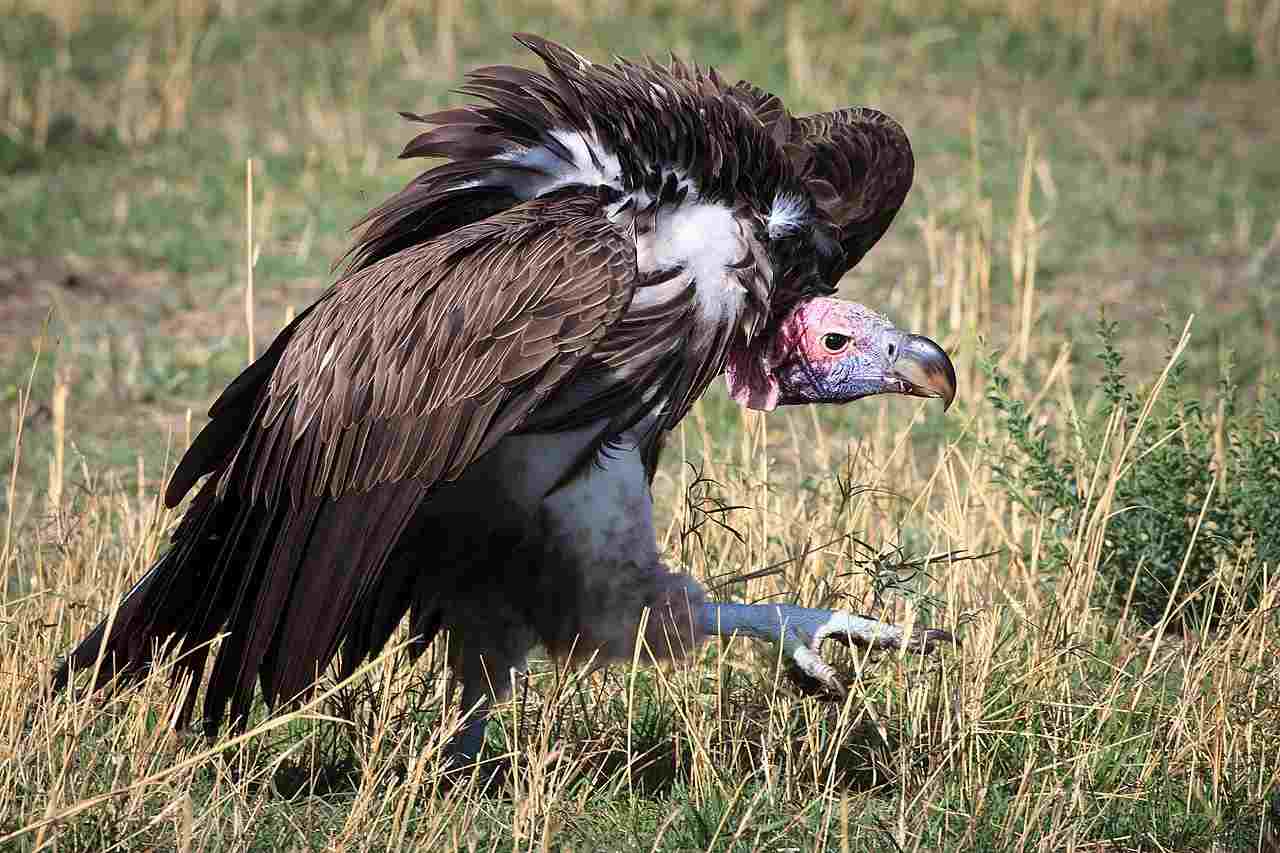
Details: Many vulture species are facing significant threats, including habitat loss, poisoning from ingesting contaminated carcasses, persecution, collision with power lines, and reduction of prey availability. As a result, several vulture species are classified as threatened or endangered by conservation organizations.
Importance: Conservation status assessments raise awareness about the decline of vulture populations and highlight the need for urgent conservation action to prevent further decline and ensure their long-term survival.
Ecological Implications: Declines in vulture populations can have far-reaching ecological consequences, including increased disease transmission, reduced efficiency of carrion removal, and disruptions to ecosystem nutrient cycling. Conservation efforts focus on mitigating threats and restoring vulture populations to maintain their ecological roles and ecosystem services.
16. Domestication and Suitability as a Pet:
Details: Vultures are wild birds and are not suitable for domestication or captivity as pets. They have specialized dietary and behavioral needs that cannot be met in a home environment.
Importance: Recognizing vultures’ wild nature and unsuitability as pets helps prevent illegal wildlife trade and promotes responsible stewardship of wildlife.
Ecological Implications: Attempts to keep vultures as pets or in captivity can have negative consequences for individual birds and wild populations, including stress, health problems, and disruption of natural behaviors. Conservation efforts prioritize protecting vultures in their natural habitats and promoting public education about the importance of conserving wild birds and ecosystems.
*Summary of Information On Vultures
Scientific Classification:
Kingdom: Animalia
Phylum: Chordata
Class: Aves
Order: Accipitriformes
Family: Accipitridae
Subfamily: Aegypiinae
Genus: Gyps (for Old World vultures) and Cathartes (for New World vultures)
Species: Various, including Gyps fulvus, Gyps rueppelli, Gyps indicus, Cathartes aura, etc.
Subspecies:
Variation in geographic range, size, and plumage coloration.
Reflects adaptation to different environments and aids in population monitoring and conservation efforts.
Size and Weight:
Wingspans from 5 feet to over 10 feet, weights ranging from several pounds to over 30 pounds.
Affects flight abilities, foraging strategies, and ecological roles within ecosystems.
Appearance and Identification:
Large, broad wings, featherless heads, hooked beaks, and sharp talons.
Plumage coloration varies from dark brown to white, aiding in identification and classification.
Dentition and Bite Force:
Powerful beaks with sharp edges for tearing flesh, lack true teeth but possess strong jaw muscles.
Efficient scavenging behavior helps prevent disease spread and facilitates nutrient cycling.
Diet:
Primarily scavengers, feeding on carrion to maintain ecosystem health.
Reduce disease transmission and prevent environmental contamination.
Behavior:
Soaring behavior using thermal air currents, keen eyesight for spotting carrion.
Efficient foraging and communication strategies maximize scavenging success.
Sounds/Vocalization:
Generally silent, may emit hissing sounds or grunts during interactions.
Play a role in communication and social dynamics within vulture populations.
Habitat:
Found in various environments, including grasslands, savannas, deserts, forests, and urban areas.
Habitat availability and quality influence distribution, foraging success, and breeding behavior.
Geographic Range and Distribution:
Found on every continent except Antarctica, with highest diversity in tropical regions.
Distribution influenced by food availability, habitat suitability, and climate conditions.
Tracks:
No distinct tracks due to aerial lifestyle, but feeding activities leave marks around carcasses.
Provide insights into foraging ecology and population dynamics.
Reproduction:
Form monogamous breeding pairs, construct large stick nests, and lay one to three eggs per clutch.
Factors influencing reproductive success impact population growth and genetic diversity.
Lifespan:
Varies among species, with some living up to 20-30 years or more.
Longevity contributes to ecosystem processes and services over time.
Major Adaptations:
Keen eyesight, featherless heads, strong beaks, and acidic digestive systems facilitate efficient scavenging.
Crucial for nutrient cycling, disease control, and ecosystem balance.
Conservation Status:
Threatened by habitat loss, poisoning, persecution, and other human-induced threats.
Conservation efforts aim to prevent further decline and restore populations for ecosystem health.
Domestication and Suitability as a Pet:
Wild birds unsuitable for domestication or captivity as pets.
Promotes responsible stewardship of wildlife and conservation of natural habitats.
